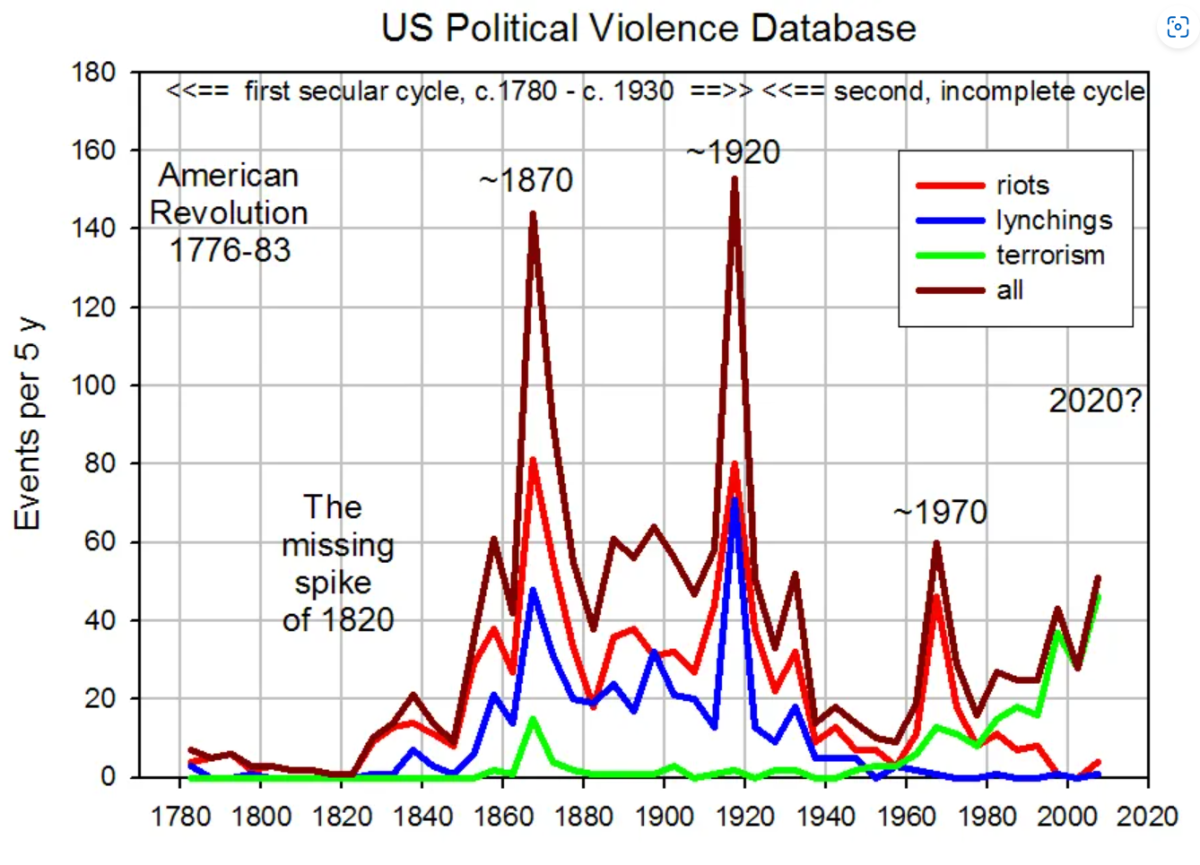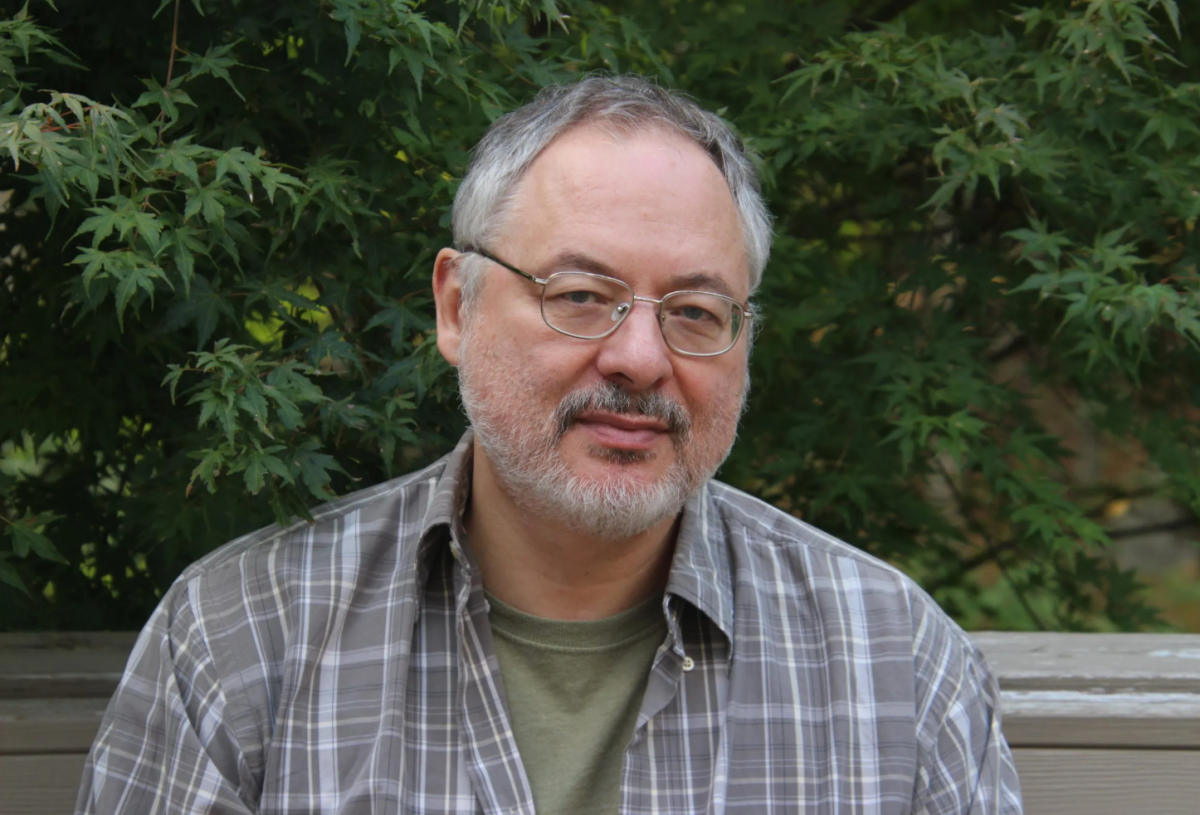Professor who predicted 2020s unrest sees US sliding deeper into crisis
Fifteen years ago, smack in the middle of Barack Obama's first term, amid the rapid rise of social media and a slow recovery from the Great Recession, a professor at the University of Connecticut issued a stark warning: the United States was heading into a decade of growing political instability.
It sounded somewhat contrarian at the time. The global economy was clawing back from the depths of the financial crisis, and the American political order still seemed anchored in post-Cold War optimism — though cracks were beginning to emerge, as evidenced by the Tea Party uprising. But Peter Turchin, an ecologist-turned-historian, had the data.
"Quantitative historical analysis reveals that complex human societies are affected by recurrent—and predictable—waves of political instability," Turchin wrote in the journal Nature in 2010, forecasting a spike in unrest around 2020, driven by economic inequality, "elite overproduction" and rising public debt.
 A protestor holds up a Mexican flag as burning cars line the street on June 08, 2025 in Los Angeles, California. Tensions in the city remain high after the Trump administration called in the National...
A protestor holds up a Mexican flag as burning cars line the street on June 08, 2025 in Los Angeles, California. Tensions in the city remain high after the Trump administration called in the National Guard against the wishes of city leaders following two days of clashes with police during a series of immigration raids.
More
Photo by Mario Tama/Getty Images
A protestor holds up a Mexican flag as burning cars line the street on June 08, 2025 in Los Angeles, California. Tensions in the city remain high after the Trump administration called in the National...
A protestor holds up a Mexican flag as burning cars line the street on June 08, 2025 in Los Angeles, California. Tensions in the city remain high after the Trump administration called in the National Guard against the wishes of city leaders following two days of clashes with police during a series of immigration raids.
More
Photo by Mario Tama/Getty Images
Now, with the nation consumed by polarization in the early months of a second Donald Trump presidency, institutional mistrust at all-time highs, and deepening political conflict, Turchin's prediction appears to have landed with uncanny accuracy.
In the wake of escalating protests and the deployment of National Guard troops to Los Angeles under President Trump's immigration crackdown, Turchin spoke with Newsweek about the latest escalation of political turbulence in the United States—and the deeper structural forces he believes have been driving the country toward systemic crisis for more than a decade.
Predicting ChaosIn his 2010 analysis published by Nature, Turchin identified several warning signs in the domestic electorate: stagnating wages, a growing wealth gap, a surplus of educated elites without corresponding elite jobs, and an accelerating fiscal deficit. All of these phenomena, he argued, had reached a turning point in the 1970s. "These seemingly disparate social indicators are actually related to each other dynamically," he wrote at the time.
"Nearly every one of those indicators has intensified," Turchin said in an interview with Newsweek, citing real wage stagnation, the effects of artificial intelligence on the professional class and increasingly unmanageable public finances.
Turchin's prediction was based on a framework known as Structural-Demographic Theory (SDT), which models how historical forces—economic inequality, elite competition and state capacity—interact to drive cycles of political instability. These cycles have recurred across empires and republics, from ancient Rome to the Ottoman Empire.
 Turchin’s forecast is based on a framework known as Structural-Demographic Theory (SDT), which models how historical forces—economic inequality, elite competition, and state capacity—interact to drive cycles of political instability.
Turchin’s forecast is based on a framework known as Structural-Demographic Theory (SDT), which models how historical forces—economic inequality, elite competition, and state capacity—interact to drive cycles of political instability.
Courtesy Peter Turchin
Turchin’s forecast is based on a framework known as Structural-Demographic Theory (SDT), which models how historical forces—economic inequality, elite competition, and state capacity—interact to drive cycles of political instability.
Turchin’s forecast is based on a framework known as Structural-Demographic Theory (SDT), which models how historical forces—economic inequality, elite competition, and state capacity—interact to drive cycles of political instability.
Courtesy Peter Turchin
"Structural-Demographic Theory enables us to analyze historical dynamics and apply that understanding to current trajectories," Turchin said. "It's not prophecy. It's modeling feedback loops that repeat with alarming regularity."
He argues that violence in the U.S. tends to repeat about every 50 years— pointing to spasms of unrest around 1870, 1920, 1970 and 2020. He links these periods to how generations tend to forget what came before. "After two generations, memories of upheaval fade, elites begin to reorganize systems in their favor, and the stress returns," he said.
One of the clearest historical parallels to now, he notes, is the 1970s. That decade saw radical movements emerge from university campuses and middle-class enclaves not just in the U.S., but across the West. The far-left Weather Underground movement, which started as a campus organization at the University of Michigan, bombed government buildings and banks; the Red Army Faction in West Germany and Italy's Red Brigades carried out kidnappings and assassinations. These weren't movements of the dispossessed, but of the downwardly mobile—overeducated and politically alienated.
"There's a real risk of that dynamic resurfacing," Turchin said.
A 'Knowledge Class'Critics have sometimes questioned the deterministic tone of Turchin's models. But he emphasizes that he does not predict exact events—only the risk factors and phases of systemic stress.
While many political analysts and historians point to Donald Trump's 2016 election as the inflection point for the modern era of American political turmoil, Turchin had charted the warning signs years earlier — when Trump was known, above all, as the host of a popular NBC reality show.
 President Donald Trump takes part in a signing ceremony after his inauguration on January 20, 2025 in the President's Room at the U.S. Capitol in Washington, DC.
President Donald Trump takes part in a signing ceremony after his inauguration on January 20, 2025 in the President's Room at the U.S. Capitol in Washington, DC.
Melina Mara-Pool/Getty Images
President Donald Trump takes part in a signing ceremony after his inauguration on January 20, 2025 in the President's Room at the U.S. Capitol in Washington, DC.
President Donald Trump takes part in a signing ceremony after his inauguration on January 20, 2025 in the President's Room at the U.S. Capitol in Washington, DC.
Melina Mara-Pool/Getty Images
"As you know, in 2010, based on historical patterns and quantitative indicators, I predicted a period of political instability in the United States beginning in the 2020s," Turchin said to Newsweek. "The structural drivers behind this prediction were threefold: popular immiseration, elite overproduction, and a weakening state capacity."
According to his model, Trump's rise was not the cause of America's political crisis but a symptom—emerging from a society already strained by widening inequality and elite saturation. In Turchin's view, such figures often arise when a growing class of counter-elites—ambitious, credentialed individuals locked out of power—begin to challenge the status quo.
"Intraelite competition has increased even more, driven now mostly by the shrinking supply of positions for them," he said. In 2025, he pointed to the impact of AI in the legal profession and recent government downsizing, such as the DOGE eliminating thousands of positions at USAID, as accelerants in this trend.
This theory was echoed by Wayne State University sociologist Jukka Savolainen, who argued in a recent op-ed in The Wall Street Journal that the U.S. is risking the creation of a radicalized "knowledge class"—overeducated, underemployed, and institutionally excluded.
"When societies generate more elite aspirants than there are roles to fill, competition for status intensifies," Savolainen wrote. "Ambitious but frustrated people grow disillusioned and radicalized. Rather than integrate into institutions, they seek to undermine them."
 Peter Turchin forecasted a spike in unrest around 2020, driven by economic inequality, elite overproduction, and rising public debt.
Peter Turchin forecasted a spike in unrest around 2020, driven by economic inequality, elite overproduction, and rising public debt.
Courtesy of Peter Turchin
Peter Turchin forecasted a spike in unrest around 2020, driven by economic inequality, elite overproduction, and rising public debt.
Peter Turchin forecasted a spike in unrest around 2020, driven by economic inequality, elite overproduction, and rising public debt.
Courtesy of Peter Turchin
Savolainen warned that Trump-era policies—such as the dismantling of D.E.I. and academic research programs and cuts to public institutions—have the potential to accelerate the pattern, echoing the unrest of the 1970s. "President Trump's policies could intensify this dynamic," he noted.
"Many are trained in critique, moral reasoning, and systems thinking—the very profile of earlier generations of radicals."
Structural DriversTurchin, who is now an emeritus professor at UConn, believes the American system entered what he calls a "revolutionary situation"—a historical phase in which the destabilizing conditions can no longer be absorbed by institutional buffers.
Reflecting on the last few years in a recent post on his Cliodynamica newsletter, he wrote that "history accelerated" after 2020. He and colleague Andrey Korotayev had tracked rising incidents of anti-government demonstrations and violent riots across Western democracies in the lead-up to that year. Their findings predicted a reversal of prior declines in unrest.
"And then history accelerated," he wrote. "America was slammed by the pandemic, George Floyd, and a long summer of discontent."
 A police officer points a hand cannon at protesters who have been detained pending arrest on South Washington Street in Minneapolis, May 31, 2020, as protests continued following the death of George Floyd.
A police officer points a hand cannon at protesters who have been detained pending arrest on South Washington Street in Minneapolis, May 31, 2020, as protests continued following the death of George Floyd.
AP Photo/John Minchillo, File
A police officer points a hand cannon at protesters who have been detained pending arrest on South Washington Street in Minneapolis, May 31, 2020, as protests continued following the death of George Floyd.
A police officer points a hand cannon at protesters who have been detained pending arrest on South Washington Street in Minneapolis, May 31, 2020, as protests continued following the death of George Floyd.
AP Photo/John Minchillo, File
While many saw Trump's 2020 election loss and the January 6 Capitol riot that followed as its own turning point in that hectic period, Turchin warned that these events did not mark an end to the turbulence.
"Many commentators hastily concluded that things would now go back to normal. I disagreed," he wrote.
"The structural drivers for instability—the wealth pump, popular immiseration, and elite overproduction/conflict—were still running hot," Turchin continued. "America was in a 'revolutionary situation,' which could be resolved by either developing into a full-blown revolution, or by being defused by skillful actions of the governing elites. Well, now we know which way it went."
These stressors, he argues, are not isolated. They are systemwide pressures building for years, playing out in feedback loops. "Unfortunately," he told Newsweek, "all these trends are only gaining power."